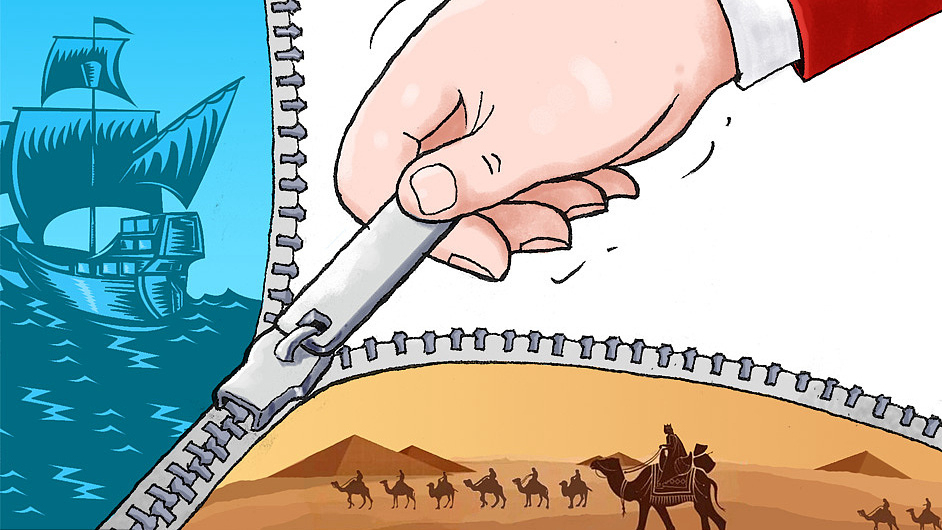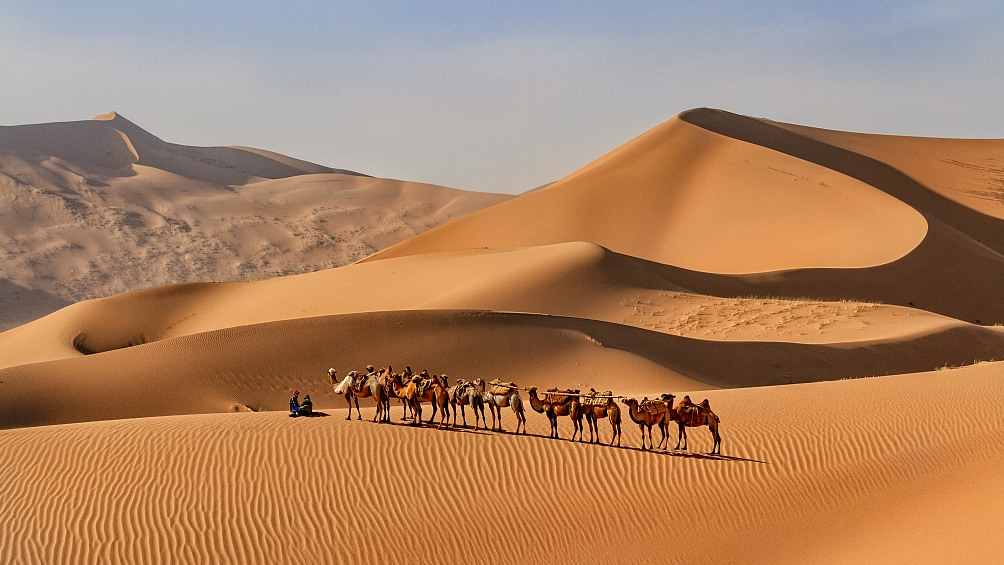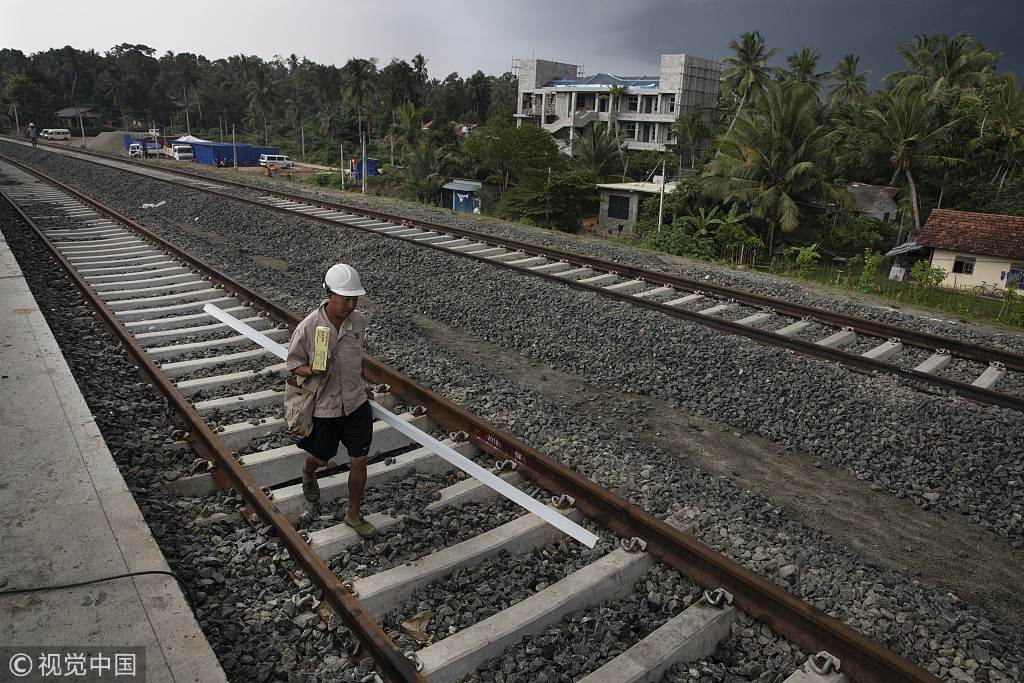
Opinion
08:26, 14-Mar-2019
Responding to misgivings about the Belt and Road Initiative
Wang Yiwei

Editor's Note: Wang Yiwei is a Jean Monnet Chair professor at Renmin University of China. The article reflects the author's opinion, and not necessarily the views of CGTN.
The Belt and Road Initiative (BRI) stands for the Silk Road Economic Belt and the 21st-Century Maritime Silk Road.
It has three keywords, the first of which is "The 21st century." The BRI is first and foremost an integrated and interconnected transportation network of railways, highways, air and sea routes, oil pipelines, power transmission lines, and communication networks. The core word is connectivity in which all things and humans are connected, vividly representing the unique features of the 21st century.
The second keyword is "belt," referring to economic corridors and economic development belts, reflecting the experience and model of China's reform and opening-up endeavors. The building of the Silk Road Economic Belt is designed to promote the development of all areas involved by gradually expanding growth and carrying out greater regional cooperation.

VCG Photo
VCG Photo
The "road" here contains broader meanings. It plays the role of "the Way" in the Chinese classic Tao Te Ching, which believes that the Way creates everything as we know in the world. The Way in today's world requires us to build a community with a shared future for mankind. The BRI is open and inclusive so that everyone can make the contribution and share benefits.
Giving lectures on the BRI in over 40 countries or participating in relevant forums, I find that there are still many misunderstandings facing the BRI. The following are my responses.
Misgivings about debt issues
Do not just think about when the hen can be sold to pay for the debt but fail to see that the hen will lay eggs. In the early days of its reform and opening-up, China borrowed from the World Bank and Asia Development Bank. The West was worried about a possible debt crisis, but it never happened when China's economy took off.
Do not take a narrow view on debts as the economy has its positive externalities and the BRI is aimed at building industrial chains rather than infrastructure only. China has invested 200 million yan in every kilometer of its high-speed railways and in total put in four trillion yuan in its 20,000 high-speed railways. The ensuing debt, instead of skyrocketing, has boosted rapid development and integration of China's economy.

The first Belt and Road Forum for International Cooperation held in Beijing, May 2017. /VCG Photo
The first Belt and Road Forum for International Cooperation held in Beijing, May 2017. /VCG Photo
Misgivings about standards
The Asian Infrastructure Investment Bank (AIIB) uses U.S. dollars and is committed to the high standard of being lean, green and clean. Besides, it has to be admitted that in some countries and projects, it is quite normal that the high standards of the West cannot be realized. What have the Western high standards brought to local communities? Through development financing and construction of industrial zones, China has been creating and fostering markets in other developing countries and will ultimately help them get financing in the international market and comply with international rules.

A new Chinese-managed and designed train station in Beliatta, Sri Lanka, November 18, 2018. /VCG Photo
A new Chinese-managed and designed train station in Beliatta, Sri Lanka, November 18, 2018. /VCG Photo
China's investment has solved the problem of "which comes first, the hen or the egg," which the West cannot or will not solve. It has helped countries along the BRI gain necessary capital for development that lays the foundation for future cooperation with developed countries.
Misgivings about the so-called neocolonialism
China has helped Africa in its industrialization and what has been achieved in a dozen years has outnumbered the results of Western colonization of hundreds of years. In addition to sharing the experience of realizing modernization through building networks of high-speed railways, expressways and regional airlines as well as industrialization, China has also engaged in projects for improving African people's well-being.
Misgivings about the so-called export of excessive production capacity
China is working to address the issue of excessive production capacity through peaceful cooperation, not through the war as Japan and Germany did during World War II. China has learned with success from the models of Japan's official development aid (ODA) and Singapore's industrial parks.
Seek cooperation while making necessary struggles. Struggles are for solidarity, not for engaging in the war of words or venting anger. It has to be emphasized that the BRI will accelerate the navigation of global capital to infrastructure and real economy so that hot money can be harnessed and put into effective use and blind investment will be turned into result-oriented investment.
In short, the Western world, which has long dominated global governance, has been uncomfortable with the BRI for various reasons and held misgivings about it. This is nothing strange. As an initiative of centennial significance, the BRI is bound to face different voices from the international community. We should respond to them actively and dispel the misgivings. We must refute the unfounded remarks to distinguish right and wrong.
(If you want to contribute and have specific expertise, please contact us at opinions@cgtn.com.)

SITEMAP
Copyright © 2018 CGTN. Beijing ICP prepared NO.16065310-3
Copyright © 2018 CGTN. Beijing ICP prepared NO.16065310-3